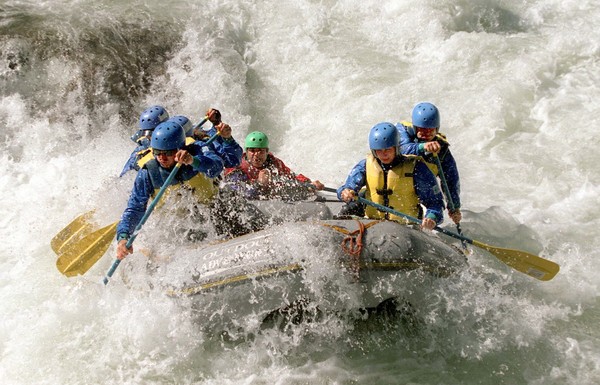Rafting on whitewater rapids definitely carries with it adventure, stress, and danger. Much of the amount of potential danger related to the activity can be mitigated by simply using your head and not getting yourself into situations where a person with little experience and skill does not belong.
What Elements Make Whitewater Rafting Dangerous?
Rafting on clashing waters is a rush! Water flowing downriver becomes rough and frothy due to rocks and boulders in the riverbed. With the “just right” mix of water and rocks, whitewater can get quite intense. Anything intense is also dangerous!
How Can Someone Drown While Whitewater Rafting?
Though rare, drownings due to whitewater rafting do occur. A person could be bucked off a raft in rough rapids. Usually, such an incident does not lead to someone drowning, but it has and it could.
How Can Whitewater Rafting Cause Broken Bones?
Even when in a raft, a person could suffer a break. This is another case of a rare occurrence that is still a real possibility. Be aware that you could injure your leg as it hangs over the side of the raft. If you fall into the water, you can break any bone in your body.
This injury risk is not reason enough to completely avoid whitewater rafting. A life worth living includes some risks.
How Can Head Injuries Occur due to Whitewater Rafting?
Falling from a raft into rushing water presents a range of opportunities to “bust your noggin”. Skip worrying over all the ways a head injury might befall a whitewater rafter. You need only wear a helmet to avoid most of those injuries.
When Making Plans to Go Whitewater Rafting, Limit Your Risks!
Rafting on whitewater rapids is two things more than anything else. It is exhilarating and risky. There are ways to limit your risks. The first thing you must do to keep your potential for injury down is contact a qualified guide.
Who Can Guide You Safely through Whitewater Rafting’s Dangers?
Guides are as good as gold when it comes to navigating whitewater. Beginners should never go it alone! Book a trip run by trained and experienced people.
Why Should You Wear a Life Vest When Whitewater Rafting?
Flotation devices must be worn by all whitewater rafters. The rapids do not care that you know how to swim! Put your pride aside and put on a life jacket!
Why Should You Wear a Helmet When Whitewater Rafting?
As was already gently asserted earlier in this article, helmets can help people avoid serious head injuries. Some people call helmets “brain buckets”. There is an axiom among outdoor adventure enthusiasts that states, “No brain bucket? No brains!” Interpret that as you will, but remember helmets are built to absorb impacts that the brain cannot survive.
In short, helmets really do save lives! Wear one when you go whitewater rafting and it could save yours!
Finally, be honest with yourself. If you are a novice to whitewater rafting, do not ruin your day or your life by signing up for a whitewater adventure that is not meant for beginners. Even if you have experienced friends who say they will look out for your safety, do not risk your life just to fit in with a group. Talk your experienced friends into “sacrificing” and doing a beginners’ adventure with you, if rafting together is important to you and them.
Whitewater rafting is dangerous, but nothing exciting has ever been completely free of risk! Be smart and have fun!
Rocky Mountain Whitewater Rafting was founded by Ron Raudelunas, a rafting guide with over 15 years experience, in 2009. Ron and his team have guided thousands of whitewater rafting trips on Clear Creek and throughout Colorado.





